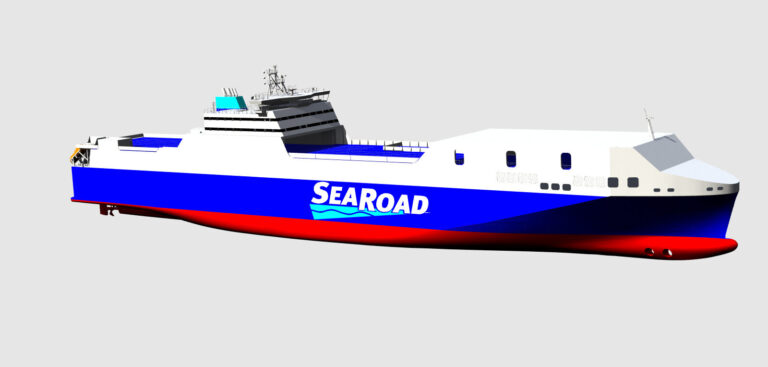Marine technology company Wärtsilä is to supply Flensburger Schiffbau-Gesellschaft (FSG) shipyard in Germany with main and auxiliary engines, fuel storage tanks, gas handling equipment and electrical systems for Australian operator SeaRoad Shipping’s new-build ro-ro vessel.
Wärtsilä will provide the 210m-long vessel with two Wärtsilä 46DF dual-fuel main engines and three Wärtsilä 20DF dual-fuel auxiliary engines, with a view to operating primarily on LNG fuel. Additionally, the Fuel Gas Handling System and LNG tanks set for installation into the ship have been designed with Gas Valve Units integrated into the tank connection space. The solution enables easier installation as less piping is needed.
In conjunction with the supply of the ship’s propulsion systems, the marine technology company will provide most of the componentry needed for the electrical system. The ro-ro will benefit from bridge consoles with integrated navigation, redundant dual-gyro compass systems and nautical sensors.
Furthermore, Wärtsilä will also deliver external communication systems, power take-in and take-out shaft alternators with multi-drive technology, monitoring and control systems, switchboards, internal communication, safety systems and lighting. Wärtsilä will be responsible for the design and integration of the vessel’s entire electrical package and the cable network.
“We recognize Wärtsilä’s strong capabilities in LNG-related technologies, as well as their capabilities in electrical systems, and these solutions are an excellent fit for this vessel,” said Philip Maracke, CEO, FSG. “We thank Wärtsilä for its excellent support and cooperation during the various phases of this project.”
“We have enjoyed a very positive relationship with both the yard and the owners throughout this project,” commented Matthias Becker, general manager sales, Wärtsilä Marine Power. “SeaRoad is committed to sustainable practices, and this very much aligns with our own commitment to the decarbonization of shipping operations. The solutions selected for this vessel promote these ambitions.”
The installation of some electrical equipment is scheduled to begin this year, with the rest of the components set to be delivered to the shipyard in the first few months of 2023. The vessel is expected to be completed by the end of 2023.



